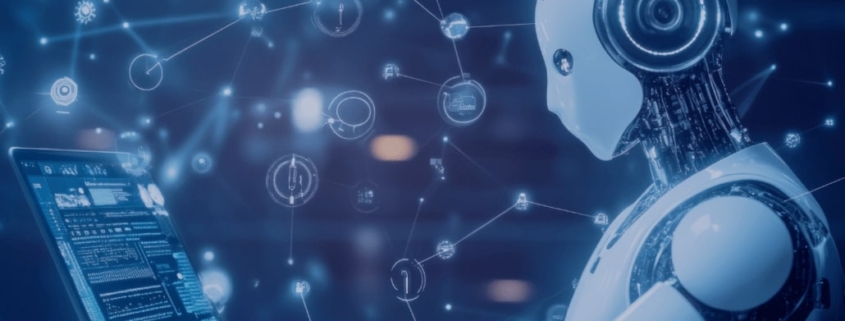How AI is changing employee monitoring in South Africa: What you need to know
As a recruitment agency in Cape Town, we know that in today’s fast-paced digital workplaces, South African employers are under increased pressure to boost productivity, manage teams and maintain workplace culture—all while respecting employee rights. Enter artificial intelligence: once reserved for tech giants, AI is now being adopted by businesses of all sizes to streamline operations and track employee performance more intelligently.
But with great innovation comes a new wave of questions. How far is too far when it comes to monitoring staff? Can AI strike the right balance between efficiency and ethics? And what do local businesses need to know to stay compliant while staying competitive? This article unpacks how AI is transforming employee monitoring in South Africa and what that means for the future of work, privacy, and people management.
The rise of AI in employee monitoring
AI technologies are increasingly being deployed to enhance oversight in various sectors across South Africa. These tools offer real-time analytics on employee activities, enabling managers to make informed decisions about workflow optimization and performance improvement. As artificial intelligence becomes more embedded in workplace operations, it’s important to understand exactly how these systems function in a day-to-day context. Here are the primary ways AI is transforming employee monitoring across South African businesses:
1. Productivity tracking: A 360° view of daily workflows
AI-driven productivity monitoring systems are designed to track a wide array of data points related to an employee’s work activities. These systems go far beyond traditional time-tracking methods. They can automatically monitor:
- Software and Application Usage: AI tools log which programs employees are using and for how long. For example, if a data analyst spends most of their time on Excel or a specific analytics platform, AI will detect this trend and categorize it as high-value work time.
- Web Browsing Patterns: The software flags unproductive sites or excessive time on social media during working hours.
- Task and Project Completion Rates: AI integrates with project management tools to monitor how quickly and accurately tasks are completed. Delays or early completions are noted, creating performance benchmarks.
- Idle vs Active Time: AI can even differentiate between periods of inactivity (e.g., no keyboard or mouse usage) and active engagement, providing a real-time pulse on productivity.
For South African companies trying to manage remote or hybrid teams, especially across different provinces, this allows management to evaluate performance without constant check-ins, reducing micromanagement while keeping productivity in check.
2. Behavioral analysis: Uncovering patterns and predicting concerns
Beyond simple tracking, AI can “learn” behavioral norms and spot potential issues before they escalate. These systems analyze data to detect changes in routine or behavior that may signal a red flag.
- Working Hours and Patterns: For example, if an employee who usually logs in at 8 AM starts showing up late or working fewer hours, the system can flag this shift.
- Interaction Style and Tone: AI tools used in internal messaging platforms can assess communication tone. A sudden shift from positive, collaborative messages to curt or negative responses might indicate burnout or dissatisfaction.
- Mouse Movements and Typing Speed: Some advanced systems even measure physical indicators such as slower typing speed or erratic mouse movements, which could be signs of fatigue or disengagement.
In the South African context, where mental health in the workplace is becoming a growing focus, behavioral AI tools can be an asset. However, it’s vital that companies use them as a support mechanism, not as a surveillance method, to maintain trust.
3. Engagement metrics: Mapping the pulse of team connectivity
One of the more innovative uses of AI in employee monitoring is in tracking engagement, not just how much people are working, but how connected and involved they feel with their work and team.
- Email and Chat Analysis: AI systems can scan communication tools to gauge how frequently employees collaborate, who interacts with whom, and whether team members are isolated.
- Meeting Participation and Feedback: These systems also assess participation levels in virtual meetings—tracking who speaks, how often, and how engaged participants seem to be based on their input and interaction frequency.
- Sentiment Analysis: AI algorithms can analyze the tone of emails, chats and feedback to assess overall employee sentiment. This helps employers understand if morale is slipping before it impacts performance.
In an increasingly hybrid South African workforce, especially with teams often split between urban centers like Johannesburg, Cape Town, and Durban, this type of AI insight allows businesses to maintain strong cultural cohesion and address disengagement early.
Balancing efficiency with privacy
While AI offers substantial benefits in monitoring and enhancing employee performance, it also raises significant privacy concerns. In South Africa, the implementation of such technologies must align with legal frameworks designed to protect personal information.
Legal considerations
- Protection of Personal Information Act (POPIA): Employers must ensure that any data collected through AI monitoring is processed lawfully, transparently and with the employee’s consent. The principle of data minimization under POPIA mandates that only necessary information should be collected and used for legitimate purposes.
- Regulation of Interception of Communications and Provision of Communication-Related Information Act (RICA): Monitoring of employee communications is permissible only if it occurs in the course of the employer’s business and with the employee’s knowledge and consent.
Employers must navigate these regulations carefully to avoid infringing on employee rights while leveraging AI tools for organizational benefit.
Implementing AI monitoring responsibly
To harness the advantages of AI in employee monitoring without compromising privacy, South African businesses should adopt a balanced approach.
Best practices
- Transparency: Clearly communicate the purpose, scope, and methods of AI monitoring to all employees. Transparency fosters trust and ensures compliance with legal requirements.
- Consent: Obtain explicit consent from employees before implementing AI monitoring systems. This step is crucial in upholding ethical standards and legal obligations.
- Data Security: Implement robust security measures to protect the collected data from unauthorized access or breaches.
- Regular Audits: Conduct periodic reviews of AI monitoring practices to ensure they remain aligned with legal standards and organizational policies.
Embracing AI without losing the human touch
Artificial intelligence is undoubtedly reshaping how South African businesses manage and monitor their workforces. From boosting productivity to identifying early signs of disengagement, AI offers a powerful set of tools that can help employers stay agile in a competitive market. However, the true challenge lies in using this technology with care, balancing efficiency with empathy, and innovation with integrity. Companies that succeed will be those that implement AI not as a means of control, but as a tool to support, empower and connect their employees.
As your business considers how to leverage AI in employee monitoring, remember that a responsible, transparent approach will always yield the best long-term results. Ready to future-proof your workforce while staying legally compliant and ethically grounded? Partner with industry experts who understand both the tech and the terrain.
Discover how MASA can help you implement smarter, people-focused staffing solutions today. Visit MASA’s homepage to get started.










